

MARTLET THE
UVicstudentsholdvigiloncampus forPalestinianskilledinGaza PG. 3
'Bandit'racesmeananyone canjoin,butshouldthey? PG. 7

Theonlyguideyouneedto Halloweencostumes PG. 8

'Performative' contests gain traction on campus
In the name of fun and radical expression, these contests bring students together through satire and self-mockery
EDEN CONTI SENIOR STAFF WRITER
“Performative” contests made their way to UVic’s campus this fall, with multiple student clubs jumping on the trend during the first week of October.
In just one week, UVic Climbing Club, Dykes Nation UVic, and an independent group, UVic Performative Males, hosted their own versions of the performative contest trend.
What was initially a social media trend has been translated into in-person contests across university campuses in the United States and in Canada. The contests typically include participants who exaggerate a stereotype, whether that be the so-called “performative males” or another more niche group, with a panel of judges to decide upon the winners.
The trademarks of a “performative male” contest include common accessories such as a tote bag, a piece of feminist literature, and an iced matcha, among other trendy items.
While all of these were present at the performative males contest, the “performative lesbian” contest held by Dykes Nation offered another window into what the contest can mean for a community.
“I think this is actually a lot bigger and more significant than just a satirical, fun, silly event for people to come together,” said Dykes Nation founder and contest participant Jordana Pangburn. “It was very political and radical to see so many people taking up space and unapologetically expressing their relationship to gender and sexuality.”
Around 200 students gathered for the performative lesbian contest that took place beside Petch fountain on Oct. 3. Prizes were awarded to participants who had the best tote bag, carabiner, earrings, literature, and performance. The attendees' props and performances ranged from things that are stereotypically associated with the lesbian and sapphic community, such as climbing equipment and sapphic poetry readings; however, many brought their own individual spins to the
contest, too.
“The performative male contests are a reflection of modern Western capitalism, but [at] the performative lesbian contest, everyone was referencing queer and sapphic history and culture. … There’s not that same depth and cultural connection within the male contests,” said Pangburn.
"There's never going to be proper equality if we can't make fun of ourselves and do goofy things"
While the performative male contests did have many of the typical trend elements to it (i.e. presentation of feminist literature and iced matcha), the organizers of the event acknowledged that it was all in good spirits and not meant to be harmful.
“The emphasis is not on ‘we are
making fun of feminism,’” said co-organizer of the performative males contest, Violet Bertram. “We’re making fun of that genre of people who think that they can use it as a tool to perform for others to get attention.”
Other performative contests have popped up on campus, aimed at bringing community members together and having fun, similar to the idea behind the performative males contest. UVic’s Climbing Club held their own version of the trend on Oct. 8 at the Centre for Athletics, Recreation, and Special Abilities (CARSA) Climbing Wall. Climbing Club executive member and photographer Kai Brown Jones said they hopped on the trend because “we want the club to be a social space for people. … It makes people want to come, [and] it’s a conversation starter. We thought, ‘why not do performative climbing?’” The heart behind all of the contests is a sense of satire, and a community being able to turn around and poke fun at itself, but the importance of that satire was especially powerful
for those at the performative lesbian contest.
“There’s never going to be proper equality if we can’t make fun of ourselves and do goofy things,” said Dykes Nation member Linnea Stevens. “The fact that we can do that is a very powerful thing. If everything is always serious and not super fun, it’s kind of demoralizing.”
Dykes Nation also made a nod to past activism on campus from the late UVic professor Dr. Michèle Pujol, who used to organize Lesbian Walks around campus, and taught UVic’s first lesbian studies course in the Women’s Studies (now Gender Studies) Department.
“I see the performative lesbian contest as being a continuation of the legacy of dyke organizing in this city,” said Pangburn. “It might not seem political on the surface, but it definitely was.”
Photo by Haida Davies McDermott.
Proposal for accessibilty committee meets backlash at senate meeting
The proposed committee faced criticism for unclear terminology, a lengthy timeline, and a lack of student representation
EDEN CONTI
SENIOR STAFF WRITER
A new senate committee slated to tackle the growing accessibility and accommodation needs on campus was proposed at the last Senate meeting on Oct. 3, but not without concerns from student and faculty senators.
The proposal for an Academic Accessibility Committee comes after the recent implementation of UVic’s new Academic Accommodation Policy and a petition from the University of Victoria Faculty Association and many other on-campus groups, calling for changes to the university’s current accommodations system.
Over an 18-month-long investigation, the committee would research and recommend strategies to better accommodate student and faculty needs when it comes to accommodating accessible learning — with an extra emphasis on “access-centred” support.
The meaning of “access-centred” roused confusion and concern among senators. UVic’s Accessibility Plan defines access-centred as the following:
“accessibility is a process that is forever changing versus a static state of being.
Access is a constant process that changes in each space and with each individual.”
“My concern … was that this is a rather empty [definition] in terms of the actual direction it would provide a committee,” said faculty senator and philosophy professor Dr. Colin Macleod. “It’s a kind of vacuous concept as it’s defined in the Accessibility Plan.”
In practice, an access-centred approach to accommodations means that courses themselves would be tailored to have universal design so “simple” accommodations (i.e. extra time, distraction reduction) would be generally applied to all students — while additional individual needs would still be met

through the Centre for Accessible Learning (CAL).
“The terms of reference are skewed towards the administration's narrative that all will be well if UVic moves more and more, and as quickly as possible, towards what they call this ‘more accessible’ education and away from an accommodation focus,” said faculty senator and history professor Dr. Lynne Marks. “No other university in Canada that we are aware of is moving at this speed in this direction.”
Other concerns raised over the proposed committee included the lack of student representation.
The proposal reads, “It is strongly recommended to include perspectives from students and those with lived experience.” Some senators questioned how this advice would be met, however, as the makeup of the committee only allots two seats to students — one undergraduate and one graduate — out of 16. The proposal “strongly” recommends consulting students and those with lived experience, but at the time of publication does not reserve a spot on the committee
for a Society for Students with a Disability (SSD) representative. Student senator and UVSS Director of Campaigns and Community Relations Michael Caryk said the lack of representation from the SSD is “deeply concerning.”
A similar sentiment was echoed by fellow senators.
“It is absolutely essential that we have input from students with disabilities on what is needed,” said senator and Associate Professor of Educational Technology Dr. Valerie Irvine. “But also we need to have voices from the people in CAL who [are on the] frontline.”
After the proposal was brought to the senate, Dr. Elizabeth Croft, VP Academic and Provost, said in a statement to the Martlet, “academic accommodation … requires thoughtful, collaborative approaches.” No specific groups were named explicitly in the proposal, nor the statement, but the proposal does say the committee would be responsible for considering impacts on campus units like the CAL, the Office of the Registrar and Enrolment Management (OREM), Division of Learning and Teaching Innovation (LTI), and UVic Libraries,
among others
While the proposal itself highlights the need for “practicality” and outlines the committee’s responsibilities, some senators were concerned with the proposal’s language around funding. The proposal states that allocation decisions —including budget, capital, hours of operation, and staffing — are “overseen by Executive Council under the authority of the Board of Governors” and would therefore be outside the proposed committee’s purview.
The “Guiding Approach” of the committee would prioritize, under the current proposal, recommendations that are “high-impact and feasible within existing or modest additional resources.”
The provincial government mandates that universities meet students' accommodation needs; however, they provide no additional funding in order for post-secondary institutions to do so properly, unlike at the K–12 level. The current proposal makes no mention of what funding limitations the committee would be required to work around.
“Given that we have legal and moral responsibilities to meet the accommodation
Potent synthetic opioid nitazene detected in counterfeit
pills
across Greater Victoria
needs of students at the university, I am a little bit worried about an approach [where] the financial constraints are controlling the agenda,” said Macleod. He later clarified in a statement to the Martlet that although financial considerations are relevant, the committee ought to know exactly what their financial constraints are.
Senator and earth and ocean sciences professor, Dr. Andrew Weaver, having had experience being on a past climate committee, brought forward concerns over how much action the committee itself would be able to take. “What we have is a deficit of decision making,” he said. “Sometimes people don’t like the decision you’ve made — you have to actually consult, you have to bring people with you, you have to be transparent about the process. But make a decision.”
Amendments to the proposal range from increasing student representation, moving the committee to operate outside of the senate, or even arranging a town hall-style meeting to include a range of voices and feedback.
The proposal is still in early stages, and there has been no formation of a committee yet. At the November 21 senate meeting, the revised proposal will be presented to members of the senate with the intention of the committee commencing its activities in January 2026.
Although no revisions have been made public at this time, there are still concerns about the committee as a whole that have yet to be addressed.
“If this is the single biggest issue facing instructors on the frontlines, surely it should be at the top of [the university’s] decision-making list,” said Weaver. “But, it clearly isn’t, if you want to strike a committee that will take two years.”
Deaf, Deaf-Blind, and Hard-of-Hearing advocates demand justice over cancelled services
B.C. government criticized by advocates for cancelling Call for Response No. 206764
DECLAN SNOWDEN SENIOR STAFF WRITER
The B.C. government, under BC New Democratic Party (NDP) leader David Eby, has cancelled Call for Response (CFR) No. 206764 — a governmentheld bid that sought service providers to implement early language services for Deaf, Deaf-Blind, and Hard-ofHearing children. These services include language schooling, in-person sign language interpretation, and primary schooling services for Deaf, Deaf-Blind, and Hard-of-Hearing children, as well as specialized schools.
In response to the cancellation of the CFR, 0 to 5 FutureBC — an advocacy group hoping to have the CFR reinstated — released a petition alongside several documents, outlining the importance of the services and calling on provincial leaders to take immediate action.
Susi Bolender, former director of Provincial Deaf and Hard of Hearing Services (PDHHS), said the cancellation of the CFR without explanation was unacceptable. According to Bolender, the document took more than two years to create, and was developed in consultation with experts to ensure it met best practices.

In a letter shared by 0 to 5 FutureBC, concerned parents urged provincial leaders to immediately reinstate the CFR, engage directly with Deaf-led organizations, affirm the government's commitment to preventing Deaf language deprivation, and collaborate across ministries to implement early language access.
In a statement to the Martlet, Nigel Howard — the spokesperson for the group, and an ASL instructor at UVic — said these early language services “would change over a century of oppressive practices that prioritize a medical model over a language model, and ensure that every baby born with hearing loss has the best chance at developing equally with their peers.” They also requested protections for evidence-based supports for children aged zero to five, a public report within two weeks explaining the cancellation, a statement regarding whether reinstatement will occur, and the rationale behind their decision.
0 to 5 FutureBC requested a 30-minute meeting with provincial leaders to discuss the cancellation of the CFR, however,
Howard said the group has not received any communication regarding a meeting, and feels they have been dismissed.
“Having [the CFR] cancelled without explanation is causing a worldwide reaction as B.C. was poised to be the leader [for] having the most comprehensive program for Deaf, Deaf-Blind, and Hardof-Hearing children…. For the Deaf community, this action was a devastation.”
One academic article published in 2017 by the journal Social Psychiatry and Psychiatric Epidemiology found that language deprivation in children aged five and younger had permanent consequences for their long-term neurological development.
An article published by the American Academy of Pediatrics found that children whose hearing loss was identified earlier, and received earlier intervention, had
significantly better language development later on.
“[These early language services] represented a landmark opportunity to build a sustainable model for early language access in British Columbia. It drew national attention and inspired families, educators, and professionals across the country who saw a clear path toward stronger early language development for Deaf, Hard-of-Hearing, and Deaf-Blind children,” 0 to 5 FutureBC said in a letter, undersigned by over 30 Deaf associations, advocacy groups, and allies.
The Martlet asked Jodie Wickens — Minister of Children and Family Development — about the impromptu cancellation of the CFR, whether or not there was any intention for a replacement, and if Deaf communities would be
consulted in the process of developing a replacement. In an emailed response, the ministry stated:
“There is no reduction in early language services for children with a hearing difference. To ensure continuity of early language services, the existing agreement with B.C. Family Hearing Resource Society will be extended until March 2027.”
The Martlet then asked what date the CFR was cancelled, and when the decision to extend the current contract was made. The ministry confirmed the CFR was cancelled on Oct. 2, 2025. The ministry did not provide the date of the extension, but did confirm the decision was made after the cancellation of the CFR. The ministry’s statement was provided to the Martlet on Oct. 10, suggesting the extension was made between Oct. 3 and Oct. 10. 0 to 5 FutureBC was formed one day after the CFR was cancelled, on Oct. 3, 2025.
“It’s clear more consultation and engagement is needed with families, those with lived experience and experts to inform an improved model for the delivery of early language services,” the ministry said. Howard told the Martlet that the government should establish a Deaf-led consultation group to assist in the development of future CFRs and policies, and suggested an advisory group at the provincial level to help guide matters affecting Deaf, Deaf-Blind, and Hard-ofHearing communities.
A powerful synthetic opioid called nitazene has begun appearing in counterfeit prescription pills in Greater Victoria, raising alarms among health officials and harm-reduction experts. Some nitazene compounds are estimated to be five to eight times stronger than fentanyl, though experts say standard overdose interventions should remain effective. Nitazenes were originally developed in the 1950s as a pain medication, but were never approved for human consumption or clinical use, leaving the drug dangerously under-researched.

thing is to ensure oxygen levels are not dropping. He also shared that naloxone should remain effective, but more doses may be necessary.
He also said that the rise of nitazenes reflects a larger problem with unregulated drugs. “As long as it’s unregulated, there’s going to continue to be volatility in it,” he said.
Health officials warn that these synethetic opioids are up to eight times stronger than fentanyl, and increasingly appearing in counterfeit pills Photo via
Nitazenes were first detected in Canada’s unregulated drug supply in 2019, but local detection has increased substantially over the last six months. Pills sold as oxycodone, Percocet, and hydromorphone have tested positive for nitazenes.
Substance Drug Checking, a free and confidential service in Victoria affiliated with UVic, has reported that zero per cent of tested samples contained nitazenes in December 2024, rising to 20 per cent in February and April, with an average of 16 per cent over the last six months.
Dr. Ryan Herriot, Victoria-based specialist in family and addictions
medicine and co-founder of Doctors for Safer Drug Policy, explained that nitazenes have distinct chemical structures from other opioids like fentanyl or morphine. Because they’re chemically different, they’re not opioids. However, they target the same receptors in the brain and have the same effects, making them “essentially a type of opioid.”
He shared concerns about these compounds appearing in counterfeit pills that are made to look like pharmaceuticalgrade opioids. Government intervention in medical decision-making has limited access to pharmaceutical-grade opioid
tablets, Herriot said, which leads people to seek them out elsewhere.
“It’s not surprising that people are going to seek those tablets elsewhere,” he said. Herriot worries someone seeking a relatively low-potency opioid will end up with nitazenes instead. “It would actually worry me less if it was being sold as fentanyl,” he said, explaining that someone seeking fentanyl instead of pharmaceutical-grade opioids will likely have a higher tolerance, and would be expecting a more potent substance.
Substance Drug Checking first detected nitazenes in November 2021. The team
uses multiple instruments to test for active ingredients, fillers, and unexpected substances. Because nitazenes often appear in low concentrations, infrared spectrometers and fentanyl test strips may not reliably detect them. Specialized nitazene test strips exist, but they are not as widely available as those used to detect fentanyl. Mass spectrometry, an analytical technique that allows scientists to identify unknown compounds, remains the most reliable method.
Herriot said overdose response protocol would remain the same with nitazenes, emphasizing that the most important
Herriot said that nearly half of people who regularly access the unregulated drug supply do not have an opioid addiction, and access the market recreationally only a few times a year, while the other half accesses the market due to addiction. He stressed the importance of regulation and expanding safer supply as interventions to make substances on the market safer for both groups. He cited cannabis regulation as an example of how organized crime profits can be reduced while ensuring quality controls, labels, and monitoring remain in place. As nitazenes become more prevalent in Greater Victoria, health officials and harm-reduction organizations emphasize caution. Testing substances, carrying naloxone, using safe consumption practices, and advocating for a regulated drug supply remain critical strategies to reduce risk.

Illustration by Sage Blackwell.
The art of writing letters is dying
The recent Canada Post strikes remind us how fragile letter writing has become, and how easily it could
disappear without public postal BRIANNA
In the digital age, writing letters — once an essential way to keep in touch with loved ones living far away — has instead become an art. The act of planning, writing, decorating and mailing a letter is a deliberate choice, filled with intentionality and intimacy. We rely on our postal system as a crucial step in this process. But what happens when Canada Post stops delivering?
For most of us, we aren't fazed when we see headlines reading “expect delayed deliveries.” When we need to mail something, we can rely on courier services like UPS and FedEx. Over the past decade, private couriers have increased their deliveries, whereas Canada Post’s has decreased. However, I believe these companies cannot replace Canada Post’s accessibility, affordability, and community service.
I was met with that reality earlier in October, when I wanted to mail a letter internationally to Denmark. What cost me $3.83 with Canada Post ended up costing $100.57 with UPS. That’s when I realized that to couriers, a letter isn't a letter — it’s a document.
Private shipping couriers don't recognize letters in the traditional postal sense, but rather treat them as document shipments — no different than a business invoice or a legal document. With a private courier, my piece of paper with heartfelt, handwritten words became a trackable premium package with a high price tag. Private
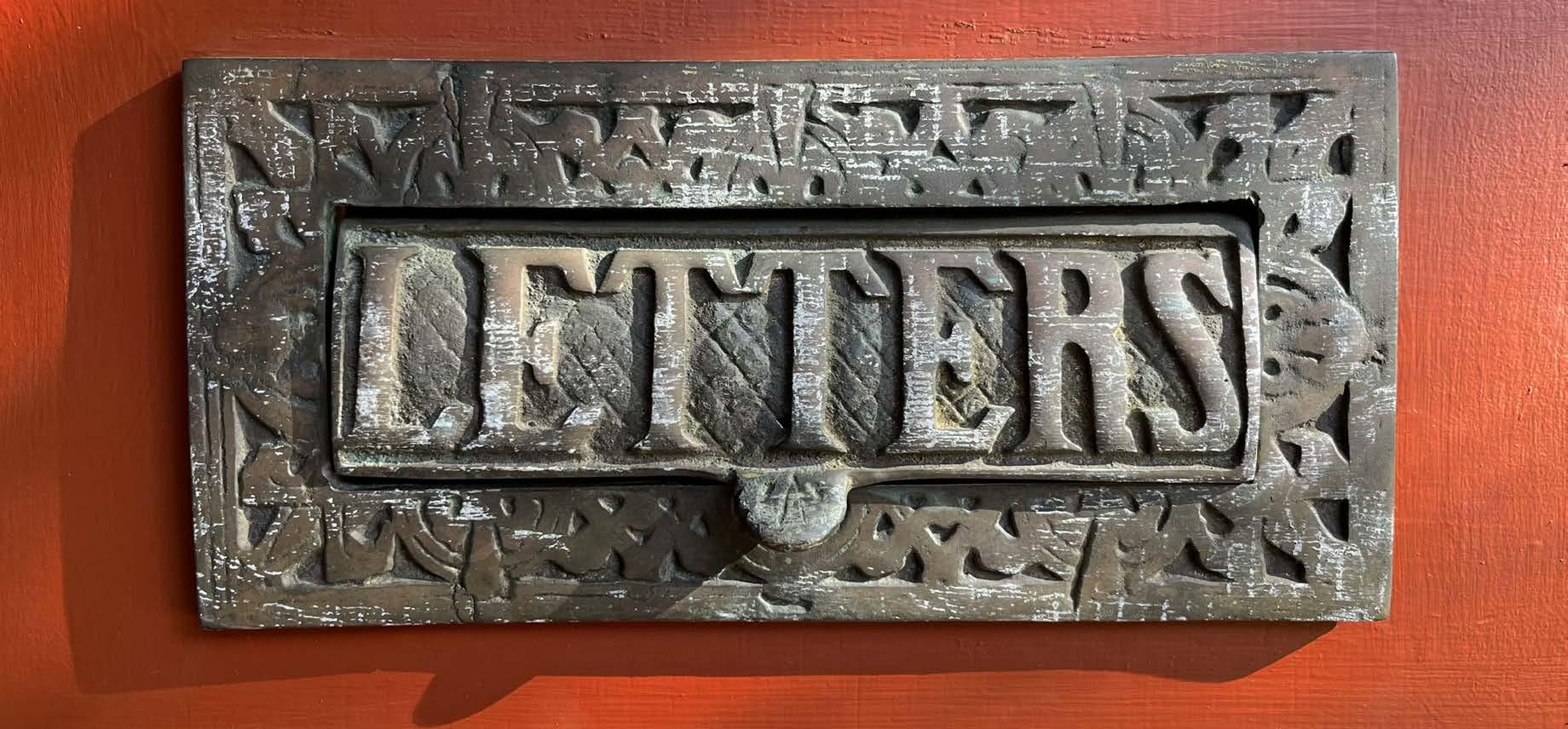
couriers are designed with business transactions and urgent shipments in mind — not the slow, sentimental act of sending a letter.
I wasn’t the only one mourning what felt like a quiet loss. For some Canada Post workers on strike, they have noticed the fragility of written letters long before the impact was felt by us. For the workers I interviewed, striking wasn’t just about pay or policy, but also protecting a community service that connects people across distance and time.
Scott, a striking Canada Post letter carrier, told me there's a “larger [feeling] that people are ready to move on from Canada Post, which is a terrible thing to say, because it's been such a
backbone of the community for so long.” The art of sending a letter begins with thinking of what to say, writing it down, and trusting someone else to carry it the rest of the way. “It comes down to a mailman putting a piece of paper in your box that is so integral” to the art of information transfer, Scott said, reminding us that the delivery finishes the circle of intention that begins with the writer’s hand. For some, letters are not just about telling your inner feelings to someone you love, but they are also a quiet way of checking in, of making sure someone is alright, and they fill an important social function beyond interpersonal communication. Scott said that letter
carriers see this firsthand. “We notice things about houses,” he explained.
“We notice mail building up in the box, [which] may make us concerned for an elderly [person].” In that small act, letter writing and delivery becomes more than just communication, but also care.
With private couriers operating as a business not a community service, we lose the humanity behind mail: the hand, the thought, and the intention that once carried every message.
Another striking worker, Troy, described letters as creating “something that moves the energy of the world.”
The intentionality of handwriting cannot be replicated digitally. In his view, writing online loses the “societal
behaviour of having deep thought,” a result of our quick and impermanent digital habits.
There is art in patience. “The patience of waiting to hear from someone,” Troy continued, “the patience of collecting your own thoughts.” With digital messages sent in an instant, and private couriers prioritizing speed, we lose yet another chance to create stillness between people.
That is, at least, until we lose Canada Post — which one striking employee, Denise, predicts could be another “ten years away.”
“We might see,” she said, “a complete disappearance of letter mail.” As more people move down a digital path, Denise said that many “people don’t think they need the post office anymore.”
In a way, she said, this costs us our “humanity, not just in letter mail, but in our society.”
The possible loss of letter writing demands our attention. Pick up a pen with someone in mind, and write to them. Go to the post office and hand that small piece of humanity to a person who will pass it to the next, until it reaches your person. The art lives in that chain, in the connection, the patience, and the shared act of care.
'Bandit races' means anyone can join, but should they? Skipping registration of a public marathon carries real risks for organizers
GABRIEL LUNN SENIOR STAFF WRITER
Each year in Victoria, the city's largest road running event, the Royal Victoria Marathon (RVM), attracts thousands of competitive and recreational runners. This year marked the 45th anniversary of the race and saw more than 15 500 participants in each of the race divisions (5k, 8k, half-marathon, full marathon), setting a record for attendance. I look forward to the race each year, and completed my first full distance marathon in 2023. I cannot stress enough that it was the hardest physical test I’ve ever attempted. This year, I looked forward to running the half-marathon, but the event was sold out months before race day. While visiting my family, I mentioned this to my father, who’s always eager to hear what amateur races I’m eyeing. When I brought up the full registration, he remarked, “Why don’t you just bandit it?”
“Banditing” is the practice of joining a public race without registering in advance. People may have various reasons for doing so — perhaps they missed the registration window, or have financial restrictions. Many “bandits” follow basic courtesies to avoid taking away from the experience of registered runners, such as not using aid stations which supply electrolyte liquids and energy gels, and not cutting off or obstructing others.
But there are reasons why banditing is considered not only selfish, but also dangerous. Before the race, each runner provides registration information with their medical history and emergency
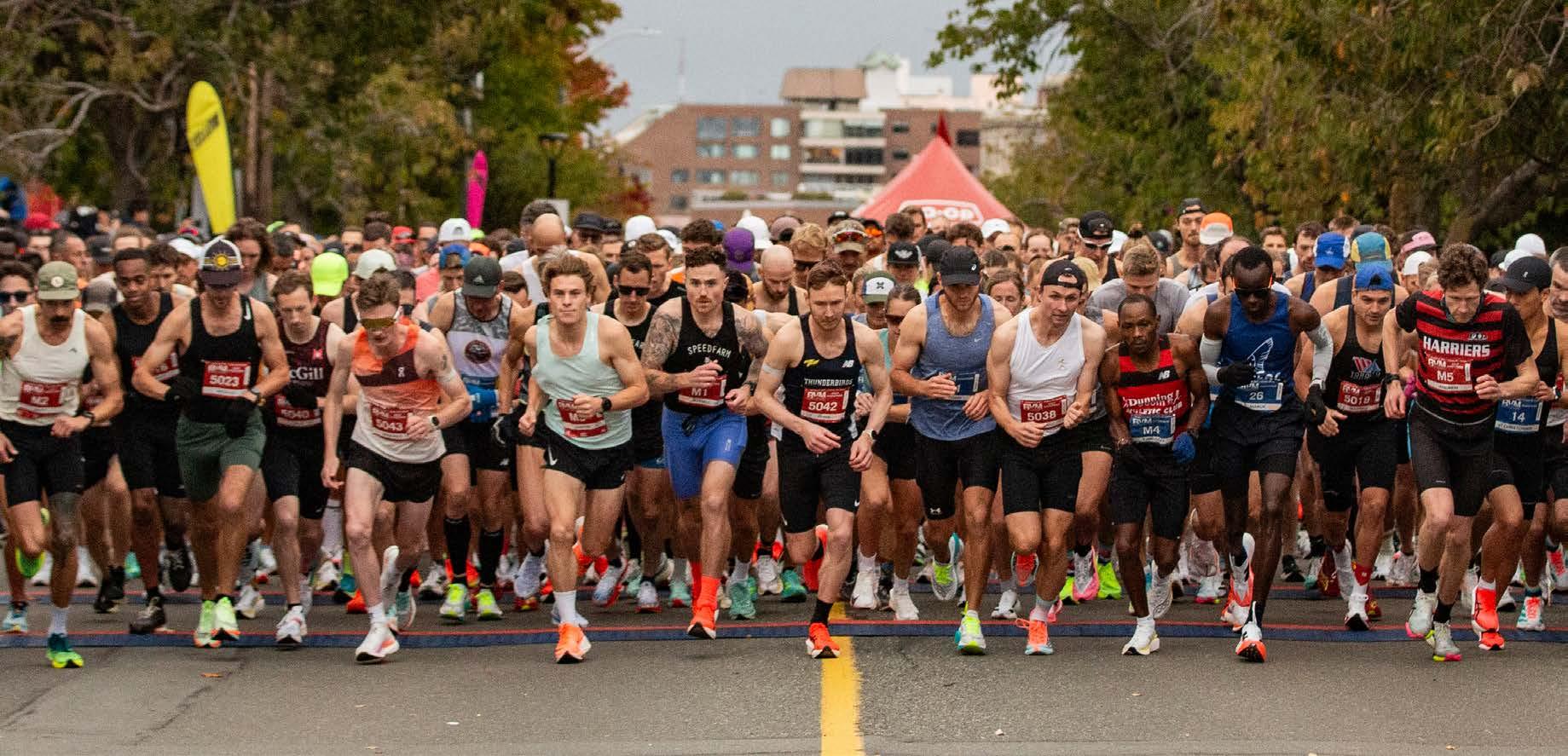
contacts in case they need medical assistance during the race. This ensures that first responders have access to vital information if something goes wrong.
Another important consideration when it comes to banditing is that it may skew results. Most competition-level races have chips installed in paper bibs, allowing race directors to track exact times and participation numbers at checkpoints. These chips register at the finish line, tallying the full data of a runner’s performance in overall standings. But in smaller community races, like the ones I’ve previously run, race times and standings are entered manually. A racer crossing the finish line without a bib or registration information can be confusing and downright infuriating for the
organizers, many of whom volunteer for the events.
Many runners feel especially negatively towards bandits, because the act is possibly stealing a spot from someone else who genuinely wants to enter the race. There is, however, the caveat that nearly every organized race will have participants drop out because of injury in the weeks leading up to the race. At the eleventh hour of the race weekend, I reached out to a friend about a possible lead on someone who had a spare registration space, because they became injured and could not race. But alas, their bib was already given to someone else. While it is uncommon for most races, the RVM does allow bib transfer at a small fee.
So, on a cold overcast Sunday morning, I did bandit the half-marathon race. I say this recognizing that my choice was brazen, and it could have had serious consequences if I injured myself, or caused a disruption to the participants behind me. The appeal of running, for those of us who are so sadistic enough to say we enjoy it, is in saying yes to the goal itself and the journey it takes to reach it.
To give you a sense of the race’s scale — imagine the biggest party you’ve ever been to. I’ve been to a party or two before, but one with over 15 000 people and thousands more on the sidelines, cheering their friends and family members on with homemade signs, really doesn't get old. Not once was I questioned by other runners or race organizers about where my race bib was, probably in no short part because it’s
Student housing should look nice, too UVic's proposed new housig project is laudable, but does it have to be such an eyesore?
LIAM AURINGER
CONTRIBUTING WRITER
Earlier this month, UVic confirmed some pre-existing rumours when it announced that a new 510-bed student housing project is set to be built on Parking Lot 5 next to the existing Cheko’nien House and Sngequ House residences. The development will feature a 17-storey tower with four-bedroom units for upper-year students, alongside a seven-storey mid-rise connected to the tower that will provide graduate studios. Once complete in 2029, the project will raise UVic’s on-campus housing capacity to more than 3 500 beds. These 3 500 beds are much needed, especially when the rental market in
Victoria is and has been brutal for many years now, with a 2.6 percent vacancy rate and a half-decent onebedroom apartment easily running into the $2 000 range. However, like the recently completed Cheko’nien House and Sngequ House, the new housing project’s design follows a similar brutalist architectural style, which has drawn mixed reactions from both students and residents — two groups who rarely agree. To UVic, the logic behind these buildings is pretty obvious — build something tall and dense using materials which are affordable, sustainable, and efficient. The university highlights the benefits of the material choices, fully electric systems, LEED Gold standards, and reduced emissions. The problem is,
what looks efficient on paper doesn’t always end up feeling welcoming in person, and what students and residents will see is gray paneling, plenty of concrete, and an architectural aesthetic which screams “prison chic.”
When asked about the new student housing, Saanich resident Megan Wilson said she supported more housing for students, but just couldn’t get past the looks. “I think there’s probably a need for [more student housing], but that picture kind of looks atrocious. That’s how I would really feel on my first instinct,” she said. For Wilson, the problem lies with the University being content with putting students in something so stark.
Wilson wasn’t the only Saanich resident with concerns. Greg Higgs shared a similar sentiment, describing the building as blocky and out of place with the rest of UVic’s architecture.
“It is very big ... It’s a square block,” he said. “There’s nothing to it.... It doesn’t really fit in with what you’ve got at UVic.”
Not all reactions were negative, however. Fourth year UVic student
Chris Morberg said that he supports any efforts to increase the supply of housing options, especially those built with students in mind. “I don’t mind [the design],” he said. I think UVic should be trying their best to not make the buildings too high, but other than that it’s fine.... They could
While nobody seems to be arguing against the existence of this new residence outright, especially when the rental market in Victoria is becoming increasingly dire, many are questioning the choices behind UVic’s architectural decisions in regard to housing.
The commitment to creating sustainable and affordable housing is objectively good in the midst of an ongoing housing crisis, but it shouldn’t come at the cost of creating buildings that are welcoming and warm, in an aesthetic sense. If UVic’s goal is to create a thriving social environment on campus while adding to the available housing supply, it should start with designing buildings that





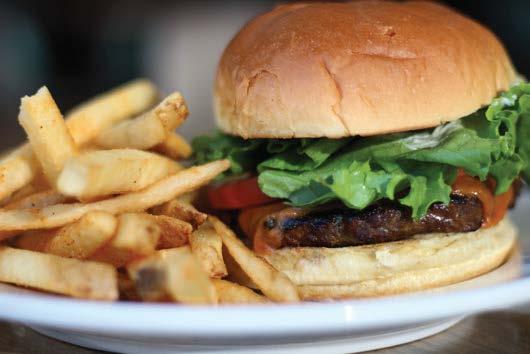
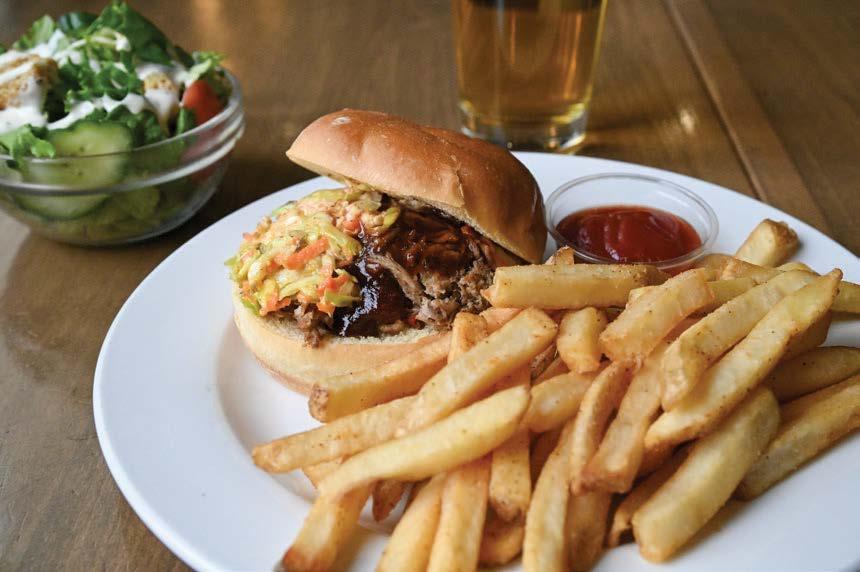


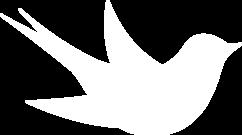
Photo by Sage Blackwell.
Photo by Billie Design Co.
ARTS & ENTERTAINMENT
UVic's resident Taylor Swift expert gives his opinion on 'The Life of a Showgirl'
Dr. Stephen Ross teaches a 200-level English course surveying Swift's discography


Agriculture's 'The Spiritual Sound' is a big, cinematic example of how beautiful metal can be
George Bush” misanthropic rhetoric of Iskra has felt less effective. On the other hand, Agriculture’s radical Black Metal styling put forth love, community, and spirituality, not just in interviews and in lyrics, but in the music too. Agriculture’s music suggests even the most grim, aggressive, fantastical sounding genres have room for interpersonal joy.
ARTS & ENTERTAINMENT
Battle
HARRIS SENIOR STAFF EDITOR
Victoria’s Art Battle promises a night of creativity, community, and competition — all painted live before your eyes.
This fast-paced event gives audiences the chance to watch local artists paint in three twenty-minute rounds. Spectators play a vital role, voting for their favourite piece, bidding in a silent auction to take home the artwork, and even entering for a chance to join the competition themselves.
Deafheaven splintered the ensuing Black Metal scene; metal valour had been stolen by a vegan-in-corpse-paint brand of ‘hipster black metal’ (a real term thrown around on forums in the early 2010s to castigate the Indie-friendly black metal championed by Pitchfork at the time).
Nowadays, Black Metal has splintered even further; its pioneers have been rightfully cancelled, while its followers argue over how historically sketchy the politics and behaviour of their idols have been. Any left-leaning metalhead speaks in hushed tones about Black Metal now; you never know who might be a Nazi sympathizer.
Once-championed progenitors like Burzum, Hate Forest, and Graveland’s national socialist proclivities ring too true in the climate of today, and band-after-band’s legacies have been dismantled and destroyed. Now, as the edgy sensibilities have fallen by the wayside, a new radical Black Metal is upon us — one which exchanges hateful brutality for joyous acceptance.
Rhinestones, glitter, burlesque, and fanfare were the imagery and tonal expectations set for Taylor Swift's newest album, The Life of a Showgirl, but what was presented was mediocre at its best.
Dr. Stephen Ross, a professor of English at UVic, began teaching a new course in January 2025 — English 240: Introduction to a Major Author: Taylor Swift.
Ross has worked closely with Swift’s discography over the past 10-plus months, giving him extensive knowledge about her artistry. Given the heated online discourse about the album, the Martlet wanted to get to the heart of it, and get Dr. Stephen Ross’s expert opinion on the album, which included praise, criticism, and even disappointment.
“Musically, I think it’s mid-tier like Lover (another of Swift’s albums) for me,” said Ross in an interview with the Martlet “Lyrically, I think it has some really interesting stuff going on, and some really not interesting stuff going on.”
Ross’s analysis included some theorizing. “If I am right, in my sense that this is actually a whole narrative told from the perspective of a character (Kitty),” Ross said, “then [that] actually takes it up in my estimation, but you have to do quite a bit of work to make that happen.”
The inspiration behind Swift's 12th album is supposedly her own life on and off stage during the Eras Tour, which took place over the course of 2023 and 2024. You can read or listen to the lyrics autobiographically, but at the end of the day, Ross said, that’s a shallow interpretation.
It’s possible “there is more going on,
and we have to get beyond thinking of the speaker as her [Swift], if we want to actually make sense of it, or make it make sense,” Ross said. “I think it doesn't make sense otherwise, and you just end up listening to it and thinking she’s nuts. That she’s completely lost the plot.” Making Swift the speaker, I think, it’s limiting for the art. Beyond the question of the narrator, Ross had many thoughts about Swift's lyricism on this album, too. He has a particularly soft spot for the album's first track, “The Fate of Ophelia.”
“I really like ‘Fate of Ophelia’ almost despite myself. I kind of don't want to, because it's the most obvious bait for an English prof, but I really think it’s the most complicated one,” said Ross. “There is a lot more going on in that song. ‘Tis locked inside my memory’ is a line from Hamlet. It adds a whole other thing going on.”
Two lines later in the song also drew Ross’s interest. “Don't care where the hell you've been,” Swift sings in the post-chorus, and in the next pre-chorus, “I might've lingered in purgatory, you wrap around me like a chain…pulling me into the fire.”
“The progression there is from purgatory to hell, not purgatory to heaven. There is a powerful undercurrent going in the opposite direction in that song that I am not sure people are picking up on,” Ross said.
“I think Wood is broadly misinterpreted as well because people are so fixated on the chorus [“I ain’t got to knock on wood”], that they lose track of the fact that most of the song is not about dicks. It’s just because of the chorus that people think it is,” said Ross.
“I am actually very interested in the way that the song uses various phallic symbols as fetishes,” said Ross. The song is essentially saying "I don't need luck, because now I have a phallus," said Ross. “I think there is really
something you could really do with that. In terms of the fetishization of no penises, but [instead], redwoods and magic wands. They are all substitute signifiers for something that actually doesn't get named in the song, and that something Travis [Kelce, Swift’s fiancé] gets reduced to.”
“[In the song] he’s just a dick,” said Ross.
Both online and in the classroom, the album has caused controversy regarding the potential political and racist implications of some of Swift’s lyrics. With the new cast of characters in her life, there is bound to be some bleeding between her personal life, politics, and music. Whatever that may now look like for Swift, a song in particular that has listeners disappointed and angry is Swift’s seventh track, “Wi$h Li$t.”
“I think that stuff [American nationalism and ‘white suburbia’ propaganda] is indisputably there,” said Ross.
“It’s got a MAGA vibe to it... We talked about this in a class the other day. We had a fight over racial politics and the white racial homogenization in “Wi$h Li$t.”
One line, referencing Kelce, reads “Got the whole block looking like you.”
“I don't think we’ll ever know what she thought she was doing,” Ross said.
“Language does what language does, and it drags with it its context(s). Intended to or not, and whether it's an unconscious expression of bias or simply a bias that is embedded in the discourse that you mobilize, it’s there.”
You can watch Dr. Stephen Ross’s lecture on the album on YouTube.
Los Angeles-based black metal band Agriculture has been placed in the “Red and Anarchist Black Metal” (RABM) scene, which was pioneered by the crust-punk tinged Victoria band Iskra in the early 2000s. Iskra wore their political-heart on their sleeve: openly calling for the destruction of governments, religion, and capital structures, and largely carrying themselves in a stand-offish and unapproachable way.
For better or for worse, Iskra operated in the negative, with an exclusionary, didactic edge. As Dan Mayer mentioned in an interview with Sun 13, Agriculture differs from other metal bands in their disinterest in the rhetoric of “big gestures” and fantasy, finding inspiration instead in “quotidian life.” While globally minded, anti-facist music has never resonated more, the “fuck
Agriculture’s second LP, The Spiritual Sound, weaponizes the assault-like atmosphere of Black Metal to produce a sonically diverse, ‘post-metal’, and often beautiful record. Unlike their debut, which owes much more dues to Black Metal tremolos and power chords, this album revels in heroic guitar solos, metalcore breakdowns, and dream-pop melodies. From the opening track, “My Garden”, The Spiritual Sound seamlessly weaves together non-metal genres in the vernacular of Black Metal. Rarely, however, does Agriculture revel in the brutality so present in extreme music. Lead guitars bask in jovial pentatonics and major scale ascensions. The production sounds full and clean, rather than barren and evil. Dan Meyer and Leah B. Levinson's harsh vocals sound almost articulate — noteworthy in a genre that has never been known for its diction. While the first half of the record plays like a deconstructed, kinder Jane Doe, the latter half plays like a sonic manifesto, expounding the jubilation of extreme music. The sullen folk track “Hallelujah” culminates in ecstatic blast beats, while “Dan’s Love Song”, an interpersonal shoegaze ballad, glides into a tremendous tapestry of extreme music with “Bodhidharma”, which sounds like Björk, Wolf Eyes, Deftones, and Botch fighting for a spot on stage.
As cinematic and enormous as The Spiritual Sound is, its feet never quite leave the ground; these are people concerned with people, even if they get there by way of Zen Buddhist folklore and imagery of ancient mountains on fire. The anarchy of Agriculture is in their form — both because of their non-adherence to the conventions of genre, but also their transfiguring of brutality into exaltation. Agriculture’s metal is not didactic; nor is brutal and difficult; it is simply meant to be felt.
Though Art Battle Victoria will take place at Capital Ballroom in downtown Victoria, this is far from your average club night. Artists will paint on easels in the middle of the room while attendees circulate, drinks in hand. DJ Koji Hattori will keep the energy flowing throughout the evening.
While Art Battle is an international organization, each city’s event is tailored by local organizers. Victoria’s chapter has been running for more than a decade and is hosted by a femme- and queer-led team that prioritizes uplifting artists and building creative connections.

Nikki Frazer, who works on digital communication and photography for the competition, said the competitors are usually a mix of emerging and experienced artists, with strong student involvement in past years. Although applications to compete have closed, this event will include a “Wildcard Easel,” where any ticket holder can enter a draw at the venue for a chance to paint. Frazer noted that while Victoria’s nightlife is vibrant, it can be hard to build community through it. The upcoming Art Battle, she said, aims to blend nightlife with connection — engaging people through art and
shared experience. Recent events, she added, have sold out.
To keep the energy high, host Jag Jasman will bring his signature charisma to the stage. Jasman has competed in and judged many live hairstyling events, even and represented Canada internationally at them twice. Having long admired how hosts create welcoming and energetic environments, he saw stepping into this role at Art Battle as serendipitous.
He hopes to foster an inclusive, daring, and joyful atmosphere — complete with costume changes, commentary, and answers to audience art questions. Jasman takes hosting seriously, seeing it as a way to support artists taking the brave step of creating under pressure while cultivating a community built on encouragement.
“It’s a good responsibility. I’m
excited about this responsibility. Not like laundry,” Jasman joked. He emphasized the importance of student participation, calling the event an opportunity to learn, create professional connections, and get inspired. “Students are at a point of learning and questioning… they’re the future.”
While Art Battle shares the same goal as traditional art events — supporting and celebrating artists — Jasman said the live, timed format makes it uniquely thrilling. The pressure of the clock, he explained, creates an atmosphere where artists and audiences alike feed off each other’s excitement.

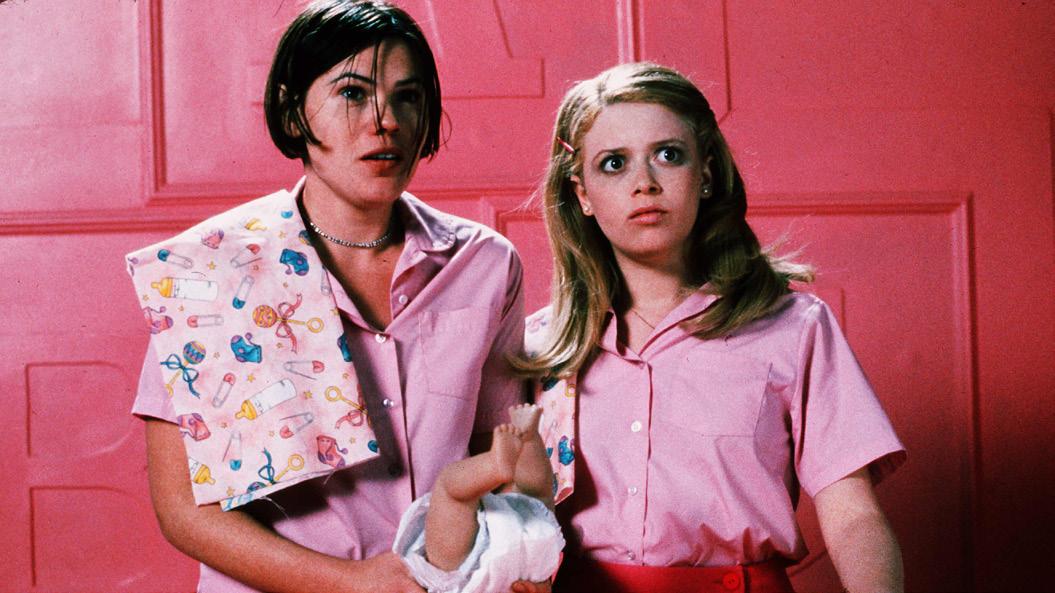
William Head on Stage explores family and memory
in 'Baile de
la Familia'
The long-standing theatre company's latest production is a series of vignettes diving into familial relationships
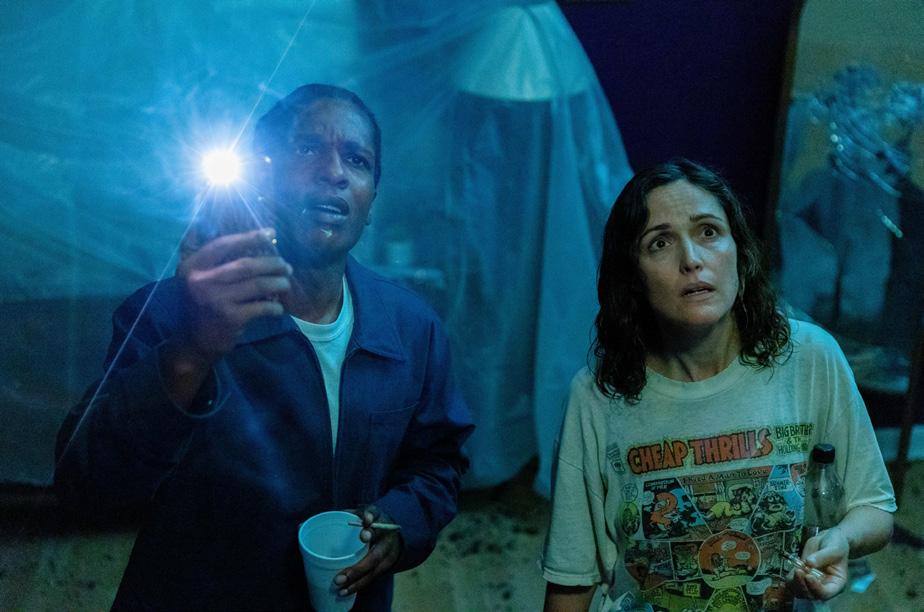
What does family mean to you? How would you define it? By biological relation? By friendships? The word ‘family’ can have many definitions.
This multitude of meanings is the concept behind Baile de la Familia (Dance of the Family) a play created and produced by the men of the William Head Institution — a minimum-security correctional facility in Metchosin, B.C.


William Head on Stage (WHoS), established in 1981, is Canada’s only theatre company in Canada run by incarcerated artists and performers.
Baile de la Familia (Dance of the is a relatively simple show. Comprising 12 monologues interspersed with songs and dancing, the cast of 12 relay to the audience what family means to them. “Because it’s family, we’re looking at a lot of different kinds of relationships, a lot of relationships in that word, which is very large.” said Deb Williams, director of the production, about the chosen theme for this year’s show.
The name and concept was decided by WHoS’ board in April, and Williams was brought on in June. Williams said they began by working on “simple exercises in memory, and people just wrote about what they remembered and what family was to them, and then it got more specific.”
The key in taking a personal story and transforming it into a theatrical piece, according to Williams, is to
make it active. “It’s not a lot of, ‘I was, I’m thinking, I’m remembering’, it’s more active — this is what happened, this is what the result was. A lot of facts, fewer feelings, because you trust that your audience has feelings and can figure out the feelings from the facts,” she said. “So, you’re treating the audience like they’re intelligent, and that they have had life experiences too.”
The stories themselves were relatively short, and displayed the individuality and diverse backgrounds of the actors. Many were quiet scenes spent with family, such as dancing with a mother, a conversation spent with a family or a friend, a motorcycle race, and so on. One performer spoke entirely in rhyme. Another sang. In addition to playing a central character in their own respective stories, the men acted as background characters in those of others, portraying family members or, in one instance, a house full of cats.
The men usually stayed on stage the entire performance, even if they weren’t directly involved in the scene. Their positioning on stage gave the effect that everyone —including the actors who weren’t directly involved, as well as the audience — were sharing an intimate moment together. Even when a performer flubbed a line, the idiosyncrasies of the performance added to this atmosphere of storytelling.
Keeping the actors on stage was a small staging choice, but looking back, an extremely effective one.
“I think it’s because it’s a really basic
need that we all have to be seen and to be heard,” said Williams on the impact of WHoS. “Most of these guys haven’t been seen or heard for a really long time. But I think this is in the general public — that people go through their lives feeling completely unheard and that no one’s witnessing who they are. But it is such a basic human need to belong, to be seen, to be heard, understood, ” she said.
“We have socialized men in this sort of dominant society to not talk about their stories, not to feel about their stories, and not to show very much.” said Williams.
“The first obstacle is to just get past the idea that this is valuable, that the stories will be held, and if you don’t want to tell them again you don’t have to, that you’re safe telling these stories, that other people have experienced these things, [and] that you’re not alone.”
Given the standing ovation after the opening night’s performance, it’s safe to say that these vulnerable stories were well-received.
Baile de la Familia (Dance of the Family) is playing at the William Head Institution on Fridays and Saturdays until Nov. 1. Tickets can be purchased at the WHoS website.
Photo via RollingStone.com.
BRIANNA BOCK SENIOR STAFF WRITER
FUN STUFF

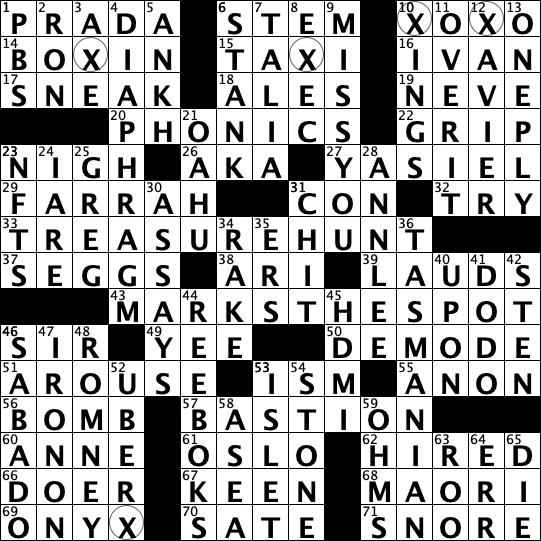
Across 1. Expansive and wide-open
5. Muslim religious leader
9. Omitted
13. Ending for "kang" or "buck"
14. Woman's name that is one letter away from 19-across
16. "This doesn't look good"
17. "Tracks were ____ _____ the field", or a clue to the circled words
19. De ____ ("you're welcome" in Spanish)
20. "I don't want to ___ __ the Old Spaghetti Factory again!"
21. Eyewear, casually
23. Primary colour
24. Coin receptacle
26. Highway patrollers
28. Someone who's always concocting a plan
31. Number of players in the game Battleship
32. Used a farm tool to dig up plants
33. Chicken house
36. Large sea duck
40. Everything
41. How 10% of the population write
43. Poem of love
44. Peach _____ (ice cream dessert)
46. Back part of something
47. Sibling that can be identical
48. Group that's straight outta Compton
50. Like the beginning of "tsunami"
52. Candy orbs that are dispensed from machines
57. Basketball player Steve
58. Chant that may be heard at a rally across the border
59. Like a sign at a roundabout
61. Armstrong and Diamond
64. "It's getting dark, there isn't much ___ ____ in the sky!"
66. Bringing back to light, like old drama
68. Part of the dog that wags
69. Aunt May portrayer Marisa
70. Seed that can be used to grow pets
71. Defeat, like a dragon
72. Inexperienced player, online
73. Handmade craft marketplace
Down
1. Valley, poetically
2. Length x width, for a rectangle
3. Like a crab that is eaten whole
4. Wrecked beyond repair
5. What's at the end of a lot of companies
6. Chocolate bar that's out of this world
7. Take in a rescue dog
8. Penny-pincher
9. Expression of approval, and the name of a Marvin Gaye song
10. Evil businessman in The Lorax
11. "Do you come from a land down _____?"
(Men at Work lyric)
12. Warty-skinned hoppers
15. Kind of scarf worn by Fred in Scooby Doo
18. Tiny particle of matter
22. Planted seeds on a farm
25. C.S. major's future field (hopefully)
27. Hawaiian taro mash
28. Farce
29. Appropriate name for a miner
30. The cat's meow, for a lion
34. Number of players in the game Solitaire
35. Smartphone precursors, in short
37. Word used to emphasize how bad something is, or a clue to the circled words
38. Tweak, like an essay
39. It's paid to a landlord every month
41. "I'll get that started ____ ____"
42. Dexter star King
45. Place to sleep and eat on vacation, in short
47. Roman playwright who wrote Phormio and Andria
49. Highest echelon of actor in Hollywood
51. Director Riefenstahl
52. Sudden bursts of wind
53. What a regular might get at their favourite coffee shop
54. Wrestle_____, major WWE event
55. Divulge a secret (2 words)
56. What the winners of Kid Choice Awards get covered in
60. Literary detective Nancy
62. Guzman of Boogie Nights
63. Neuter
65. "______ so" (justifiably)
67. Part of a skeletal cage


